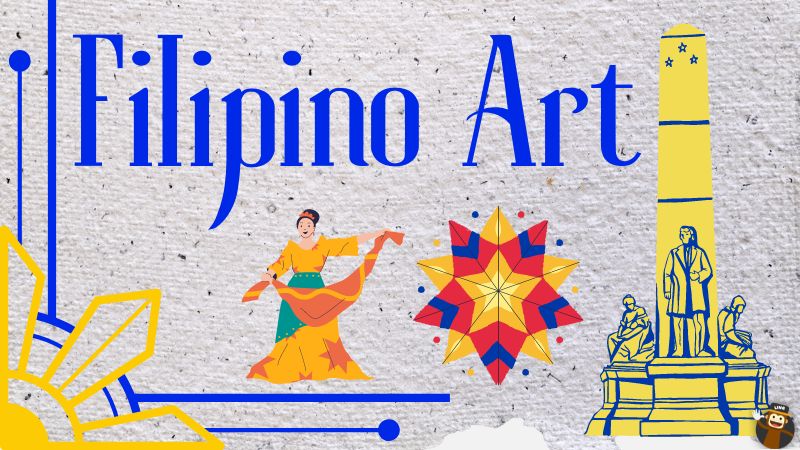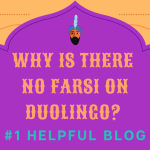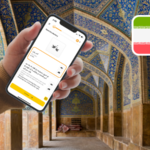This guide will explain to you everything about the importance of Filipino art and how Filipino national artists design their projects and showcase them with the proper kits and accessories available and outperform other artists to reach the top. You will learn their steps and techniques on how they execute their plans for designing the best fine arts there is.
This article will explain each and everything with an overview of 5 minutes or less.
Filipino Art
Filipino art has a great influence from generation to generation, from cultures of different countries and its diversity over them. Paintings were mostly done on walls in prehistoric times. Paintings included different types of movement of the human body, different animals, fruit gatherers, and objects.
Moreover, during the 16th century, it was the time of Spanish by which they had a complete influence which had led to the beginning of Christianity paintings which was a way to spread catholic teachings and the paintings were mostly displayed in churches as a sign of respect.
How Did It Get So Popular?

This was from the 16th century to the 19th century; the 19th century was the time for Filipinos by which they were gaining education based on paintings and realized how important modern art is in everyday life.
Furthermore, the artist started to express their feelings through conceptual art and the extraordinary visualization with out-of-the-box strategies, in which they described their culture, lifestyle, and creativity, language sign, and represented their own identity for the work they have performed.
Filipino tattoos have also made it really famous that many people are talking about these days.
Young Artists And Their Style Of Art
Young artists started their research and explored different ways of painting and other watercolor paints to create a realistic look in paints like illuminated landscapes which inspired child-friendly art. World War 2 had a major influence on painting.
Filipino artists had the majority of their focus on the World War 2 scenario in which they represented their skills by using the dark and grim nature of how the war had its impact on the Philippines.
The Philippines had developed and had searched various ways of performing quality art which is divided into two parts traditional and non-traditional which are then later on categorized into different parts.
Filipino Art And The Capital City
Manila is the center of art and design and is the capital city of the Philippines (check the map of Philippines for more information). Secondly, this is the place where Filipino artists all from other cities compete against one another.
Thirdly, exhibitions take place in Manila where artists show their talented skills by which business owners check their work and offer them a partnership based on their talents.
Traditional Art And Design
Thanks to nature, the artist can use wooden brushes and the chemicals extracted from other trees and soils that produce a beautiful scent of smell. The best natural resources are artists from Bamboo, coconut oil, and rattan.
Art Displayed In The Museum Of The Philippines
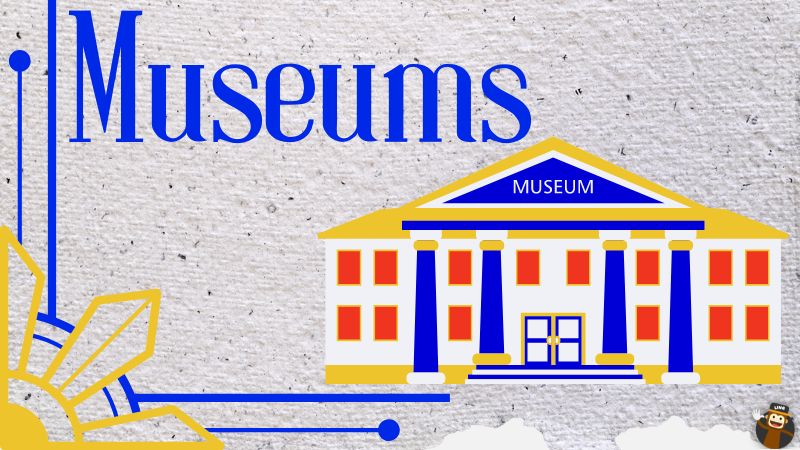
There are many museums in the Philippines which are an embodiment of Filipino history and extensive culture. Here is a brief account of a few of them:
Ateneo Art Museum Gallery
Founded and opened in 1980, located in Manila the capital city of the Philippines in the building of Arete of Ateneo, they provide virtual assistance for those who can’t visit the museum due to a clash in timings of business hours.
Pinto Art Museum
In 2010, this museum was opened up for drawing and art enthusiasts, its literal meaning is opening a door in Filipino, this museum is a gateway for both local and international artists to connect with the love and passion for art.
Filipino Art Located In New York
Filipino art was finally being recognized and being displayed internationally in New York where it found its best initiative in 2017.
You should also try out the Philippines mouthwatering cuisine for an enhanced experience.
Best Places To Buy Art And Crafts In The Philippines

These are some of the best places where you can find arts and crafts which are now on sale in high exhibitions and language of materials that women mostly find purchasing they could be collections that could be subdivided into categories and mostly are in the hand of fruit gatherers
Insides Of Local Marketplaces
Many markets in the Philippines where you find materials, handicrafts, and souvenirs. The best local market area is Quiapo where you can buy loads of local stuff there like bamboo wind chimes and a variety of traditional things.
Crafts from different parts of the provinces at amazing prices. Even the smallest market in the city named Legazpi is worth checking out on handmade crafts tools and has different categories of the collection which is country-wise.
South Sea Pearl Market
You can purchase high-quality brushes and paints from her. They also offer jewelry as it was owned by a French farmer who is an entrepreneur and had experience in south sea pearls farming, now it has an online store where you order your product and gets it near your doorstep after you receive a confirmation call.
Traditional Art Inspiring Fashion
It has been entitled to fashion as many models, actors, and actresses want to present themselves in art.
Agsam Fern
Gina Nebrida, founder of Asgam Fern beauty accessories created sales that were highly convinced with the artwork of the Filipinos, so she started to collaborate with the artist to skyrocket her brand. She used their design to combine with her beauty accessories and advertisements.
Her brand is now highly recognized locally and internationally thanks to the artist of the Philippines.
Lenora Cabilli
In the most famous town of Lumban near Manila, where a fashion designer with the textile artist of the Philippines design creativity and collaboration with Lenora Cabilli with the mixture of traditional artwork along with the Philippines heritage and ancient paintings that have inspired millions of people.
Famous Filipino Artists And Their Masterpiece
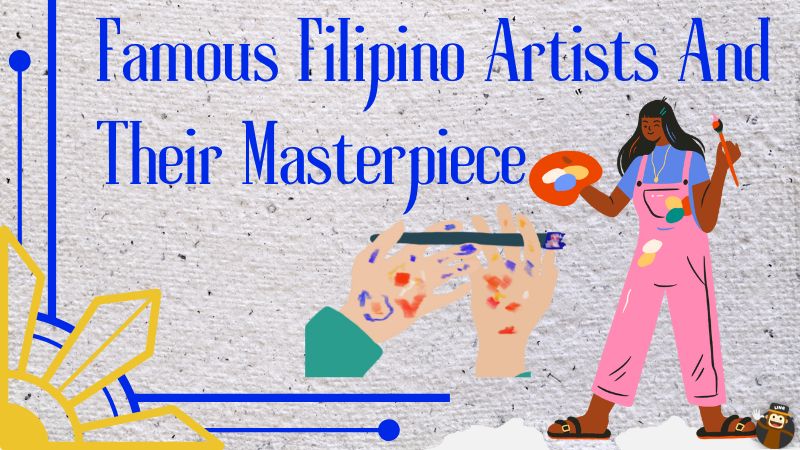
Fernando Amorsolo
Fernando Amorsolo was one of the first National Filipino artists during the 1900s and was nicknamed the grand sage of Filipino Artwork.
He was Trained in Spanish painting techniques and developed the style of backlighting where he brought out colorful illustrations of the local people of the Philippines reflecting the luminous background of the sun with its radiance the models or figurines painted would highlight the enormous amount of sales and the surrounding landscapes and canvases.
Thus, making it a beautiful correlation of artwork it was during this time that he was ill and his eyesight was falling short but his will remained to the task up till the end of his life he drew almost ten wondrous works of art per month and drew the community closer till his death occurred at the age of eighty.
This man is the founder of artwork in the Philippines and without him, there would not have been any inspiration for the artwork to continue in the country.
Jose Joya
A Filipino multimedia artist and a relevant pioneer expressionist who used to devote themself to his paintings by using a unique array of bold and various colorful painting techniques which pressed on the representation of layers using loose strokes and vitalized dripping methods.
The colors synced in harmony which used a pre-emphatic illustrative representation of the Philippines landscape and the tropical wildlife.
His influential practice lies in the fact of amazing gesture painting styles which highlighted the painting on numerous and continuous canvases and landscapes which he laid out using a tube or by using brushes with wide and overlapping strokes.
Pacita Abad
The artist was born in the northern areas of the island of Batanes and had obtained a degree in master of political science from the site of the University of the Philippines.
She launched an activism regime of rebellion against the Marcos in the 1970s and then moved to San Francisco to study law but later on, she discovered her true talent in the value of art.
Her paintings consisted of a mix of luminous vibrant colors and a constant array of changes in patterns and leading materials for her paintings.
The early stages of her work comprised depictions of socially political people, masks, tropical flowers, pottery designing, and underwater scenarios. She is a unique master of painting, and her mastery of the style created the technique called ‘Trapunto’.
Many of her travels and journey with her husband have created influencing inspiration around the world for her creative techniques and extraordinary in her art.
Furthermore, she has participated in more than 50 exhibitions all over the United States of America.
Ang Kiukok
A Chinese-origin immigrant is a Philippine role model and earned the title of national artist in the year 2001. His original painting styles made him popular and were mostly presented in auctions and received surprisingly high bids for his skills.
Moreover, his exceptional work is presented in the Cultural Center of the Philippines, the national museum of Singapore, and the national museum of Taipei.
Benedicto Cabrera
One of the best-selling commercial painters and was a promising artist of his generation and is still remembered today.
His well-known skills are paintings, sketching, and printing designs. He studied under Jose Joya at the University of the Philippines and received his degree in fine arts and excellence in his painter’s skills.
His career started to blossom and had expanded within under five decades, where his paintings, sketches, illustrations, and prints were exhibited in Asia, Europe, and the USA.
He now resides in the northern hill station of Baguio where he has now represented and established the four-level Ben cab museum on Asin road that has featured electronic artifacts with a heart-touching vast collection from Filipino artists.
Tahimik Kidlat
In 2008, he was awarded the national artist prize for the film. His film is based on him, and he is renowned as the “Father of Philippine Art.” He displayed his painting abilities in a playful manner, depicting both opulent and destitute lifestyles.
He is admired by filmmakers such as Werner Herzog and Francis Ford, and his most renowned autobiography, Scented nightmare, was released in 1977. It blends writing skills and essay writings with artistic settings to produce a worldview of comedy and strong critique that generates a drive between the Philippines’ socially wealthy and poor.
He has also developed the café and vegetarian restaurant “Oh My Gulay”, which is located on the fifth floor of the building of la Azotea and is a correlation between kidlet imagination and beliefs in his paintings, which feature wooden bridges, bright translucent blue fish pond streams, and native sculptures surrounded along with beautiful wildlife and ingenious plants, according to some facts and assumptions he has created a large artistic villa.
This shows his passion and hard work towards his artwork that brought him fame along with achievements of Philippines and popularity amongst the locals of the country his excellent materials and tools to present his work in front of an audience are truly magnificent and worth seeing for his generation.
Eduardo Masferre
Born to a Filipino mother and Spanish soldier father, he is titled the father of Philippine photography and artistic designs which created a great influence over the Philippines.
His work is present in the National Museum of Natural History in Washington D.C. He did his major in photography and had photographs of different environments and nature
Agnes Arellano
His best-known plaster, bronze, and cold-cast marble sculptures highlight the essence of a female body, and his work draws from themes such as sexuality, religion, history, and mysticism which borrow from the significant terms and points of poems from famous poets such as Gerard Manley Hopkins.
Agnes takes predictive measures to the attributes of her working themes that assert a unity between internal elements in making her various ornaments which draw from the tragedy of the story of her parents and sister’s death from a house fire in the 1980s her work also explores the concept of creation with destruction and the settings of the cycles of life from the living to the ones who have vanished from the entirety of life.
Chabet, Roberto
When Roberto Rodriguez began his career in the arts, he utilized his mother’s maiden name, Chabet. He began his career as a student-teacher at the University of the Philippines, where he taught for thirty years and is widely regarded as the father and founder of conceptual art.
Chabet studied architecture and infrastructure as well, but his themes and uniqueness always led him down the path of conceptual art, colleges, and ornaments, establishing him as a rebellious leader in the scenic world of art.
Each sculpture created by him is marvelous. He also founded and directed the Philippine Cultural Center, where he established the thirteen artists’ awards to recognize the achievements of young students at the time who displayed their contemporary work in art drafting and thinking.
Wrapping Up

That’s it for this blog post. Won’t Filipino art make you want to travel to The Philippines now? Learn The 3+ Best Things To Know Before Going To The Philippines. If you want to learn the Tagalog language then you can check out the Ling App.
Happy learning!
Download Ling today and start speaking confidently in Filipino!
